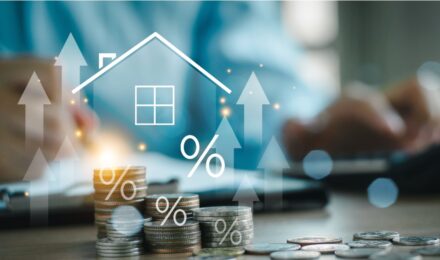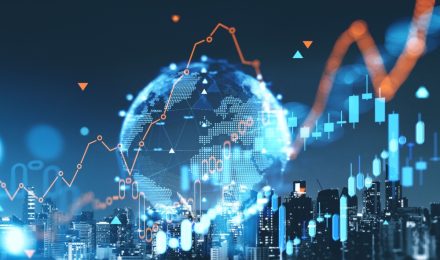Inflation, the elusive and ever-changing economic phenomenon, is a topic that persists in capturing the attention of people, businesses, and countries worldwide. Its effects are far-reaching, influencing everything from the cost of groceries to global financial stability.
As prices rise and purchasing power declines, understanding inflation becomes paramount for making informed financial decisions and planning for the future. In this article, we embark on a journey to demystify inflation, examining its causes, consequences, and potential remedies while equipping you with valuable insights to navigate the inflationary landscape.
The Definition and Basics
What is Inflation?
Inflation can be likened to an insidious beast, silently gnawing away at the value of money over time. Inflation is the sustained increase in the general price level of goods and services in an economy. When the overall price level rises, each currency unit buys fewer goods and services, decreasing purchasing power.
The Inflation Rate
Economists use the inflation rate to measure the pace of price increases. It is usually expressed as a percentage, representing the year-on-year change in the Consumer Price Index (CPI) or the Producer Price Index (PPI). Central banks and policymakers closely monitor the inflation rate to gauge economic health and make monetary policy decisions.
Unraveling the Causes
Demand-Pull Inflation
One of the primary causes of inflation is demand-pull inflation. This occurs when an economy’s aggregate demand for goods and services outpaces its supply. As consumers increase spending, businesses raise prices to capitalize on the excess demand.
Cost-Push Inflation
Cost-push inflation, on the other hand, is driven by rising production costs, such as raw materials and labor. When businesses face increased expenses, they often pass on the burden to consumers through higher prices.
Built-In Inflation
Built-in inflation, sometimes called wage-price inflation, is a self-fulfilling prophecy. It stems from the expectation that prices will rise, leading workers to demand higher wages to maintain their purchasing power. However, this wage increase only fuels the inflationary cycle further.
Inflation’s Impact on Daily Life
Purchasing Power Erosion
One of the most tangible effects of inflation is the erosion of purchasing power. What used to buy a week’s worth of groceries a few years ago may now only cover a few days. This decrease in buying power can significantly impact households, particularly those with fixed incomes.
Interest Rates and Investments
Inflation also influences interest rates set by central banks. Central banks may increase interest rates as inflation rises to curb excessive borrowing and spending. For investors, inflation can eat into the real return on investments, making it crucial to choose assets that outpace inflation.
Real Estate and Inflation
Real estate, often considered a hedge against inflation, tends to rise in value during inflationary periods. Property values follow suit as the cost of living increases, providing homeowners and investors with a sense of security amid economic uncertainties.
Taming the Beast: Combating Inflation
Monetary Policy
Central banks play a pivotal role in controlling inflation through monetary policy. By adjusting interest rates and employing open market operations, they aim to keep inflation in check while fostering economic growth.
Fiscal Policy
Governments can also combat inflation through fiscal policies, such as taxation and government spending. By managing the money flow in the economy, policymakers strive to maintain a healthy balance between growth and price stability.
Inflation Expectations
Apart from the traditional approaches of monetary and fiscal policies, inflation expectations play a crucial role in shaping inflationary trends. These expectations refer to what individuals, businesses, and investors anticipate in future inflation. When people expect prices to rise, they may adjust their behavior accordingly, fueling inflation.
Central banks carefully monitor inflation expectations as they can become self-fulfilling prophecies. If people expect higher prices in the future, they may demand higher wages and increase their spending to beat the anticipated price hikes. This, in turn, puts upward pressure on prices, leading to the realization of those expectations.
Protecting Your Finances Amid Inflation
Diversify Your Investments
Inflation can erode the value of traditional assets like cash, so diversifying your investments becomes paramount. Consider allocating a portion of your portfolio to assets that perform well during inflationary periods, such as commodities, real estate, and inflation-protected securities.
Review Your Debt
Inflation can have a dual impact on debts. On the one hand, it may erode the real value of your debt, making it easier to repay over time. On the other hand, if you have variable-rate debt, such as adjustable-rate mortgages, rising inflation could lead to higher interest payments. Assess your debt structure and consider refinancing fixed-rate loans to lock in lower interest rates.
Stay Informed and Adjust
Keeping yourself informed about economic trends and inflationary pressures allows you to make informed financial decisions. Be ready to adjust your financial strategies as the economic landscape evolves. Maintaining flexibility in your financial planning can help you navigate the challenges posed by inflation.
Inflation’s Global Impact
Inflation is not confined to national borders; it transcends boundaries and affects economies globally. The interconnectedness of today’s world means that inflationary trends in one country can ripple through the global economy, influencing trade, investment, and financial stability.
Exchange Rates and Trade
Inflation can influence exchange rates, which, in turn, impacts international trade. When a country experiences higher inflation than its trading partners, its goods and services become relatively more expensive. This can lead to a decrease in exports and an increase in imports, potentially widening trade deficits.
Capital Flows and Investments
Investors closely monitor inflation rates when deciding where to allocate their capital. Countries with higher inflation may experience capital flight as investors seek better returns elsewhere. On the other hand, countries with lower and stable inflation can attract foreign investments, stimulating economic growth.
Inflation and Developing Economies
Developing economies are particularly vulnerable to inflationary pressures. Many countries rely heavily on imported goods, and higher inflation can significantly impact their import bills. Moreover, inflation can exacerbate income inequality and hinder poverty reduction efforts as essential goods become less affordable for low-income populations.
Inflation and Global Financial Stability
Inflationary shocks can threaten global financial stability. Large-scale inflation can create uncertainties in financial markets, leading to fluctuations in asset prices and the potential for speculative bubbles. Moreover, inflation can strain the debt-servicing capacity of governments and corporations, leading to increased default risks.
The Role of International Organizations
International organizations, such as the International Monetary Fund (IMF) and the World Bank, play a critical role in monitoring and addressing inflationary challenges on a global level. They provide technical assistance, financial support, and policy advice to member countries to help them combat inflation and maintain economic stability.
Conclusion
Inflation, a multifaceted economic phenomenon, profoundly impacts individuals and societies alike. Understanding its causes and consequences empowers us to make prudent financial choices and plan for a more secure future. As we navigate the ever-changing economic landscape, knowledge of inflation serves as a compass to steer us away from its hidden traps and towards a more prosperous horizon.
Inflation, the elusive and ever-changing economic phenomenon, is a topic that persists in capturing the attention of people, businesses, and countries worldwide. Its effects are far-reaching, influencing everything from the cost of groceries to global financial stability.
As prices rise and purchasing power declines, understanding inflation becomes paramount for making informed financial decisions and planning for the future. In this article, we embark on a journey to demystify inflation, examining its causes, consequences, and potential remedies while equipping you with valuable insights to navigate the inflationary landscape.
The Definition and Basics
What is Inflation?
Inflation can be likened to an insidious beast, silently gnawing away at the value of money over time. Inflation is the sustained increase in the general price level of goods and services in an economy. When the overall price level rises, each currency unit buys fewer goods and services, decreasing purchasing power.
The Inflation Rate
Economists use the inflation rate to measure the pace of price increases. It is usually expressed as a percentage, representing the year-on-year change in the Consumer Price Index (CPI) or the Producer Price Index (PPI). Central banks and policymakers closely monitor the inflation rate to gauge economic health and make monetary policy decisions.
Unraveling the Causes
Demand-Pull Inflation
One of the primary causes of inflation is demand-pull inflation. This occurs when an economy’s aggregate demand for goods and services outpaces its supply. As consumers increase spending, businesses raise prices to capitalize on the excess demand.
Cost-Push Inflation
Cost-push inflation, on the other hand, is driven by rising production costs, such as raw materials and labor. When businesses face increased expenses, they often pass on the burden to consumers through higher prices.
Built-In Inflation
Built-in inflation, sometimes called wage-price inflation, is a self-fulfilling prophecy. It stems from the expectation that prices will rise, leading workers to demand higher wages to maintain their purchasing power. However, this wage increase only fuels the inflationary cycle further.
Inflation’s Impact on Daily Life
Purchasing Power Erosion
One of the most tangible effects of inflation is the erosion of purchasing power. What used to buy a week’s worth of groceries a few years ago may now only cover a few days. This decrease in buying power can significantly impact households, particularly those with fixed incomes.
Interest Rates and Investments
Inflation also influences interest rates set by central banks. Central banks may increase interest rates as inflation rises to curb excessive borrowing and spending. For investors, inflation can eat into the real return on investments, making it crucial to choose assets that outpace inflation.
Real Estate and Inflation
Real estate, often considered a hedge against inflation, tends to rise in value during inflationary periods. Property values follow suit as the cost of living increases, providing homeowners and investors with a sense of security amid economic uncertainties.
Taming the Beast: Combating Inflation
Monetary Policy
Central banks play a pivotal role in controlling inflation through monetary policy. By adjusting interest rates and employing open market operations, they aim to keep inflation in check while fostering economic growth.
Fiscal Policy
Governments can also combat inflation through fiscal policies, such as taxation and government spending. By managing the money flow in the economy, policymakers strive to maintain a healthy balance between growth and price stability.
Inflation Expectations
Apart from the traditional approaches of monetary and fiscal policies, inflation expectations play a crucial role in shaping inflationary trends. These expectations refer to what individuals, businesses, and investors anticipate in future inflation. When people expect prices to rise, they may adjust their behavior accordingly, fueling inflation.
Central banks carefully monitor inflation expectations as they can become self-fulfilling prophecies. If people expect higher prices in the future, they may demand higher wages and increase their spending to beat the anticipated price hikes. This, in turn, puts upward pressure on prices, leading to the realization of those expectations.
Protecting Your Finances Amid Inflation
Diversify Your Investments
Inflation can erode the value of traditional assets like cash, so diversifying your investments becomes paramount. Consider allocating a portion of your portfolio to assets that perform well during inflationary periods, such as commodities, real estate, and inflation-protected securities.
Review Your Debt
Inflation can have a dual impact on debts. On the one hand, it may erode the real value of your debt, making it easier to repay over time. On the other hand, if you have variable-rate debt, such as adjustable-rate mortgages, rising inflation could lead to higher interest payments. Assess your debt structure and consider refinancing fixed-rate loans to lock in lower interest rates.
Stay Informed and Adjust
Keeping yourself informed about economic trends and inflationary pressures allows you to make informed financial decisions. Be ready to adjust your financial strategies as the economic landscape evolves. Maintaining flexibility in your financial planning can help you navigate the challenges posed by inflation.
Inflation’s Global Impact
Inflation is not confined to national borders; it transcends boundaries and affects economies globally. The interconnectedness of today’s world means that inflationary trends in one country can ripple through the global economy, influencing trade, investment, and financial stability.
Exchange Rates and Trade
Inflation can influence exchange rates, which, in turn, impacts international trade. When a country experiences higher inflation than its trading partners, its goods and services become relatively more expensive. This can lead to a decrease in exports and an increase in imports, potentially widening trade deficits.
Capital Flows and Investments
Investors closely monitor inflation rates when deciding where to allocate their capital. Countries with higher inflation may experience capital flight as investors seek better returns elsewhere. On the other hand, countries with lower and stable inflation can attract foreign investments, stimulating economic growth.
Inflation and Developing Economies
Developing economies are particularly vulnerable to inflationary pressures. Many countries rely heavily on imported goods, and higher inflation can significantly impact their import bills. Moreover, inflation can exacerbate income inequality and hinder poverty reduction efforts as essential goods become less affordable for low-income populations.
Inflation and Global Financial Stability
Inflationary shocks can threaten global financial stability. Large-scale inflation can create uncertainties in financial markets, leading to fluctuations in asset prices and the potential for speculative bubbles. Moreover, inflation can strain the debt-servicing capacity of governments and corporations, leading to increased default risks.
The Role of International Organizations
International organizations, such as the International Monetary Fund (IMF) and the World Bank, play a critical role in monitoring and addressing inflationary challenges on a global level. They provide technical assistance, financial support, and policy advice to member countries to help them combat inflation and maintain economic stability.
Conclusion
Inflation, a multifaceted economic phenomenon, profoundly impacts individuals and societies alike. Understanding its causes and consequences empowers us to make prudent financial choices and plan for a more secure future. As we navigate the ever-changing economic landscape, knowledge of inflation serves as a compass to steer us away from its hidden traps and towards a more prosperous horizon.



